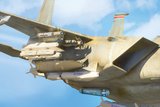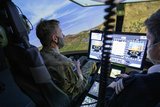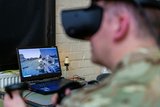How the new LTAMDS radar will thwart evolving air defence threats (Studio)
Brought to you in partnership with Raytheon Missiles & Defense
In an increasingly unpredictable international landscape, the US and its allies must prepare to engage an evolving set of airborne threats.
The Lower Tier Air and Missile Defense Sensor (LTAMDS) aims to meet this demand, with rapid progress being made by Raytheon Missiles & Defense and the US Army.
LTAMDS is a 360-degree, Active Electronically Scanned Array (AESA) radar. It will detect and track the full range of threats, including ballistic and cruise missiles, fixed-wing aircraft, and unmanned aircraft systems (UAS).
‘These threats are flying farther, faster and with more accuracy, and adversaries are now coordinating attacks to use these threats simultaneously,’ explains Tom Laliberty, president of land warfare & air defence for Raytheon Missiles & Defense, the manufacturer of LTAMDS.
LTAMDS is the first member of the GhostEye family, Raytheon Missiles & Defense’s new suite of advanced radar technology.
In US service, LTAMDS will be part of the Army Integrated Air and Missile Defense, of which the Integrated Battle Command System (IBCS) is a component. IBCS is a network connecting all air and missile defence systems.
LTAMDS is designed to replace the current Patriot radar in the US Army’s air and missile defence architecture. It can also be integrated with the Patriot air and missile defence system.
Laliberty says that six radars will be delivered to the US Army in 2022 for testing, with the first system currently being tested at the White Sands Missile Range. Two others are being tested in Raytheon Missiles & Defense’s open-air test site in New England, while the remaining three are at the company’s Andover, Massachusetts facility completing integration testing.
‘LTAMDS is a transformational radar,’ Laliberty says. ‘It’s a leap ahead in technology and capability over currently deployed radars, providing greater capability against proliferating and stressful threats.’
These advances are seen on several levels. First, the 360-degree capability of LTAMDS means it can sense and detect threats from every direction. On top of this, its powerful gallium nitride semiconductor technology strengthens the radar signal and enhances its sensitivity, providing extended range, higher precision and improved resolution.
‘These features expand the battlespace, the ability to sense in all directions wherever the threat comes from, the ability to detect at longer distances and [to detect] threats travelling at higher velocities,’ Laliberty explains.
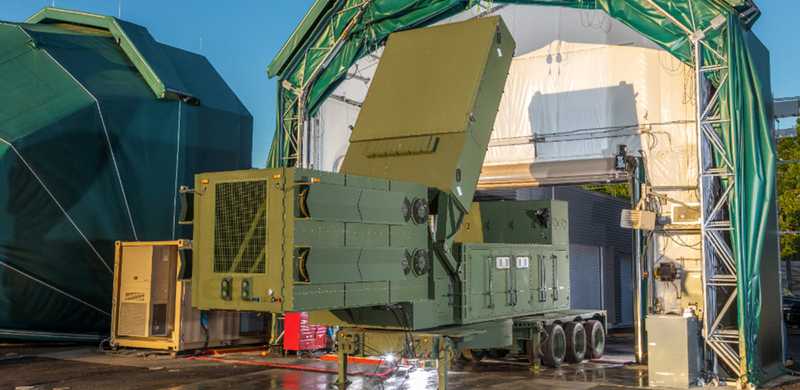
The US Army will essentially replace the bulk of its Patriot radars with LTAMDS. The new system can integrate with the current PAC-2 GEM-T and PAC-3 MSE interceptors and can support future interceptors, both kinetic and directed energy systems, Laliberty says.
Additionally, operators of air defence systems around the world are taking notice. More than 12 nations have expressed a formal interest in acquiring the radar, with Poland recently signing a letter of request to the US government requesting LTAMDS as part of the country’s air defence architecture.
While air defence has always been a high military priority, the war in Ukraine has made many countries around the world assess their capabilities, particularly in Europe.
This ranges from technologies such as LTAMDS – which aim to boost sensor capability and capacity – to efforts to bolster the magazine depth of interceptors.
‘We’re certainly seeing a lot of enquiries about accelerating LTAMDS,’ as well as in the other air and missile defence capabilities RMD provides, Laliberty reveals.
Not only does international expansion provide this capability to US allies, but it also boosts their commonality with the US, extending strong working relationships and affording cost benefits. As with the Patriot programme, Raytheon Missiles & Defense foresees a future in which LTAMDS operators worldwide participate in a support partnership.
‘We have what’s called the International Engineering Services Program for Patriot, which essentially shares the cost of system upgrades across all participants. And we’re working with the US Army to implement a similar programme for LTAMDS.’
Raytheon Missiles & Defense can produce 12-18 radars per year, Laliberty notes, thanks to the company’s investments in its facilities.
‘As we continue to execute on our US Army commitments, these international units can coincide in production,’ he explains. ‘There are compelling economies of scale if we’re able to do that production at the same time.’
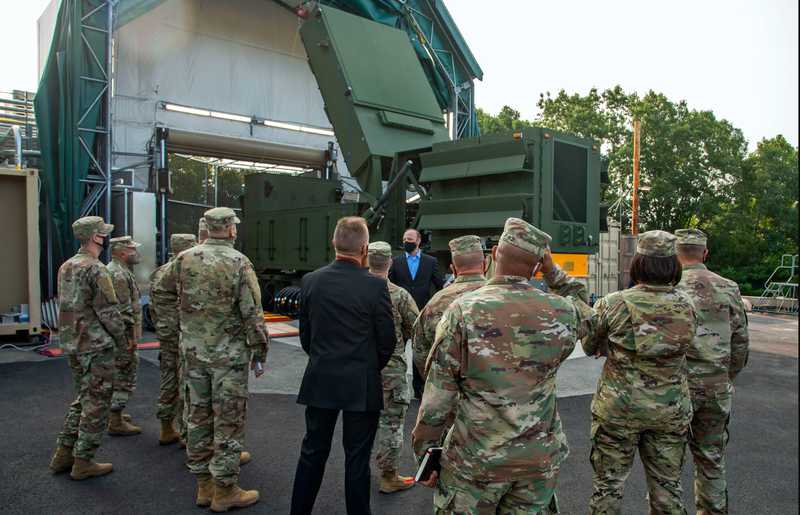
LTAMDS is the first stage of Raytheon Missiles & Defense’s evolving ambitions in radar technology, represented by the GhostEye family. The company has also developed GhostEye MR, a medium-range battlefield radar, with plans to expand the suite in the coming years.
This new generation of radars features software-defined apertures, meaning the systems can employ additional capabilities through software upgrades.
‘This will significantly expedite getting new capability to the warfighter [through] the equipment that they’re already operating,’ Laliberty explains.
GhostEye technology will also provide a high level of automation compared to current radars, enhancing the ability to emplace, operate and maintain the systems. They also feature an AI-based health prognostics capability, automating and supporting system maintenance.
‘These features translate to a much higher operational availability of the system and lowers demanding requirements, making it much more economical for our customers to operate,’ Laliberty concludes.
More from Studio
-
![Combat-proven capabilities: How precision-strike systems are evolving for tomorrow’s battlespace (podcast)]()
Combat-proven capabilities: How precision-strike systems are evolving for tomorrow’s battlespace (podcast)
Combat-tested technology is being reshaped to counter A2/AD threats, reduce reliance on GPS and enable faster, more autonomous targeting in complex environments. In this special podcast, experts explain how the evolving threat landscape is shaping next-generation strike capabilities.
-
![Energy evolution: How laser defence systems are powering the next phase of air defence (podcast)]()
Energy evolution: How laser defence systems are powering the next phase of air defence (podcast)
Laser-based air defence is moving from promise to deployment as global threats evolve. In this special podcast, we explore how high-energy laser systems are reshaping interception strategies.
-
![Intelligence advantage: How real-time GEOINT is reshaping military decision-making (Studio)]()
Intelligence advantage: How real-time GEOINT is reshaping military decision-making (Studio)
In today’s contested operational environment, adaptability is key. The new Geospatial-Intelligence as a Service (GEO IaaS) solution from Fujitsu and MAIAR empowers militaries by enabling intelligence advantage, combining advanced technology with human expertise to deliver actionable insights.
-
![Training Together: Unlocking Educational Excellence through Military and Industry Collaboration (Studio)]()
Training Together: Unlocking Educational Excellence through Military and Industry Collaboration (Studio)
Military training is ultimately about people. At Capita, training programmes are built on close engagement with partners, delivering an educational approach that can adapt to individual needs, cultivate leadership – and drive wider cultural change.
-
![Enhancing Military Training Through Digital Technology (Studio)]()
Enhancing Military Training Through Digital Technology (Studio)
Digital technologies offer huge opportunities for defence training. However, militaries must adopt an agile approach, placing the needs of their organisations and personnel at the centre of their efforts.
-
![Layered Defence: How new technologies are enhancing armoured vehicle survivability and manoeuvrability (Studio)]()
Layered Defence: How new technologies are enhancing armoured vehicle survivability and manoeuvrability (Studio)
As modern threats evolve, armoured fighting vehicles face a new era of challenges, from loitering munitions to kinetic energy projectiles. Advances in active, passive, and reactive protection systems are crucial to ensuring battlefield dominance, freedom of manouver and vehicle survivability.











